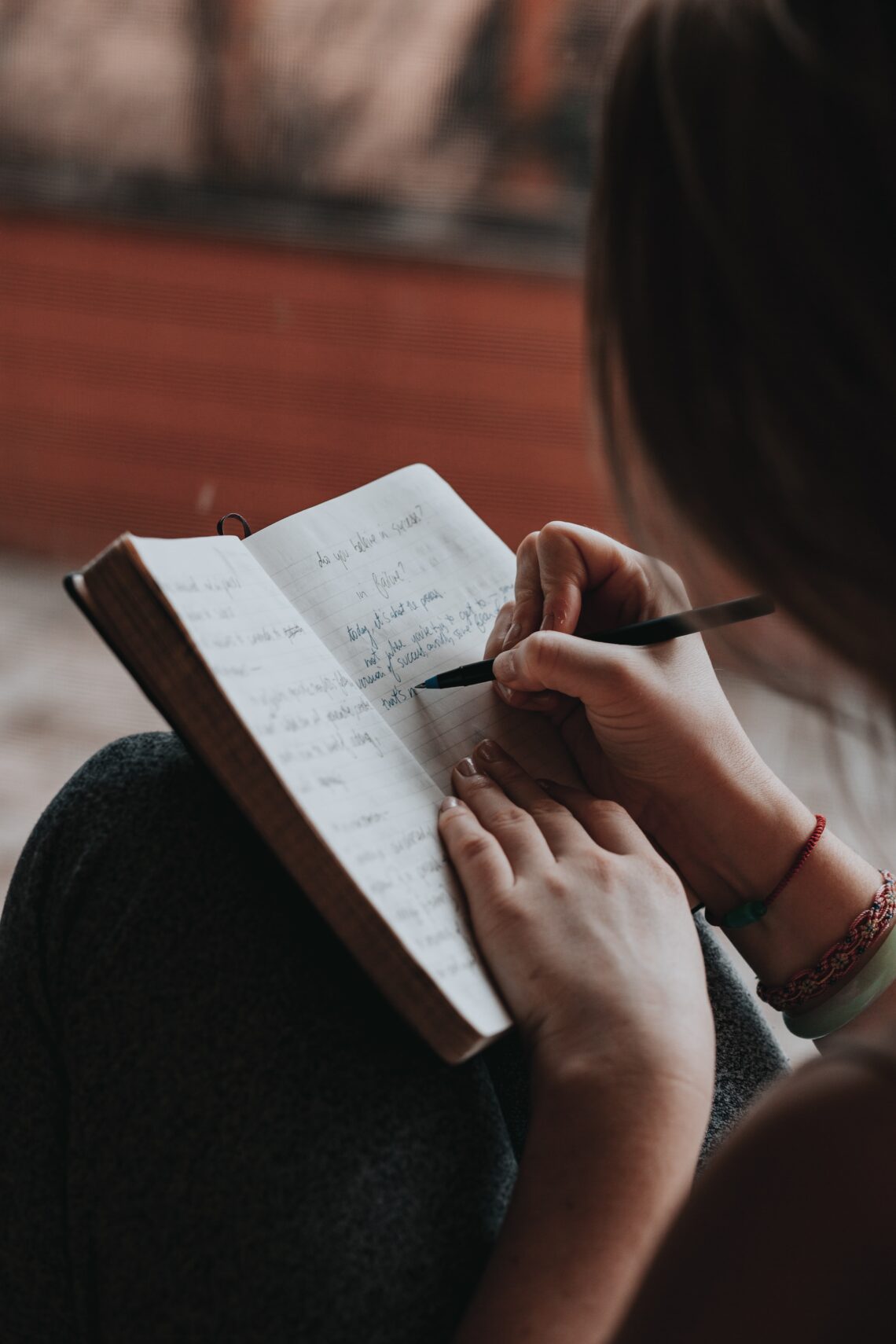
Focusing on the positive
People often try to think positively but can sometimes fail to do so.
An article written by SkillPath states, “The human brain has a natural tendency to give weight to (and remember) negative experiences or interactions more than positive ones – they stand out more. Psychologists refer to this as negativity bias.”
Regardless of the kind of person someone is, people can tend to think negatively more often than not. If someone is regularly told how well they are doing, but something negative is brought up, they will likely focus on the negative.
That’s why activities such as gratitude journals can help someone focus on the positive.
Gratitude journals are designed to help people acknowledge the positive parts of their day. Focusing on the positive encourages an optimistic outlook.
One of its most common uses is highlighting the daily moments that can make someone feel grateful.
Karine Belhache, a teacher at Le Phare Elementary School in Ottawa, says that gratitude journals are a great activity.
“It’s important to have time everyday for gratitude. Gratitude journals are a great tool for that because you can look back at the pages from previous days to remind yourself of what you are grateful for.”
Unlike other journals, gratitude journals aren’t only meant for writing. In fact, the School Mental Health Ontario states that writing things down is a good start, but other techniques such as drawing or adding photographs can be great additions to the journal and can give life to the memory.
Gratitude journals do a lot of good, and they can be paired with different activities. One example is gratitude circles. In gratitude circles, people share at least one thing they were grateful for that day.
Having each person write down what they are grateful for makes it easier to remember when sharing with the group. It also gives people a chance to verbalize their gratitude.
Belhache has used both gratitude journals and circles. She believes that writing is useful but shouldn’t be the only option.
“Writing isn’t for everyone, so it’s important to make the journal less repetitive and boring. Having mementos completes the memory, and it’s equally important to have them,” she says.
Belhache says gratitude circles should be practised regularly to get the most out of them.
Although both techniques are great tools to improve positivity, she stressed that they shouldn’t always be done together.
“Journaling can be very personal, so forcing someone to share what they’ve written should never be an option,” Belhache says.
Everyone can make time for gratitude whether it’s through journals, gratitude circles or another activity. Making an effort to remember the good parts of life opens up plenty of opportunities for people to appreciate each day.
Mindful gratitude
A listicle of small ways to bring appreciation into daily life
Gratitude is defined as the quality of being thankful and willing to show appreciation and kindness.
Busy lifestyles and depressing news cycles can be counterintuitive to an individual’s ability to be grateful for the good things in their life. It is often necessary to carve time out daily to practice gratitude.
Modern life can be hectic and not conducive to intentional appreciation. Daily gratitude practice can be done in as short as a couple minutes and the results can be life changing. Showing gratitude can shift a negative mindset to a positive one. It can alter the way the brain perceives its surroundings based on appreciating the good instead of fixating on the bad.
Here are a few easy ways to build a daily practice around gratitude:
Gratitude journal
A gratitude journal is a space to intentionally express gratitude daily, often in the morning or before bed. Setting time aside each day to write a few things to be grateful for allows the brain to focus on the good things.
Harvard Health research shows that making a conscious effort to focus on positive elements reduces rumination on negative thoughts. Heightened focus on negative thoughts can lead to a depressive or low mood.
Chris Dini, a government executive, was struggling with chronic stress from work and life when she found gratitude journaling.
“I start the day by doing my gratitude journaling. It helps me get into a positive state of mind for the day and reminds me that my life is filled with love and beauty despite the stress,” she said.
Meditation and yoga
Meditation is a practice that involves thinking deeply and carefully. Taking time out of the day to sit with thoughts free of distractions can create a unique sense of calm.
There are guided meditations available online that focus on gratitude and appreciation. Many of these meditations can be found for free on YouTube or Spotify or on meditation subscription services like Calm and HeadSpace.
Similar to gratitude journals, this practice allows for an uninterrupted and intentional focus on positivity and gratitude. Yoga and meditation go hand in hand. They both focus on the body and the breath and appreciating where one is in the current moment. Yoga and meditation encourage a focus on the connection between the mind and body.
Spending time in nature
Spending time in nature for a few minutes a day is a way to show gratitude to the Earth. Going on a walk or a hike can help clear the mind and engage with one’s natural environment.A European Centre for Environment and Human Health study at the University of Exeter examined the positive effects of nature. Those who spent at least two hours per week in nature had increased levels of mental well-being and happiness.
Gratitude to nature has also been linked with an increased interconnectedness with the individual and their natural environment. Intentionally connecting to Earth and nature is especially vital in urban environments where nature is not as easy to come by. This interconnectedness with nature is also associated with engagement in pro-environmental behavior which in turn is good for the Earth and the preservation of the nature we are grateful for.
Expressing gratitude outwardly
Expressing gratitude and love outwardly is a simple way to incorporate daily gratitude practice. A study done at Berkeley had participants write gratitude letters. It found that only 23 per cent of participants sent their letters. The study showed that even just writing the letters was enough to benefit from the gratitude practice.
It also found that when participants motivated by gratitude did a good deed, there were positive effects on the brain. These good deeds led to happiness and elevated mood. The study found that charitable deeds and an outward show of gratitude make the brain more vulnerable to gratitude. In turn, this led to a more positive mindset which can help increase motivation, energy and happiness.
Taking a break from social media
It’s easy to get caught up in the constant stream of information available on social media. Taking a break from it allows the mind to avoid information overload. It’s easy to compare one’s life to the lives of peers on social media. It’s also easy to fall victim to “doom scrolling,” which refers to spending time on the internet consuming negative news. Taking time away from consuming this information allows one to live in the present and focus on their surroundings.
Limiting screen time and stepping away from social media cultivates an appreciation for the here and now. It also allows one to focus on their life without comparing it to those seen on social media timelines.
About the author





